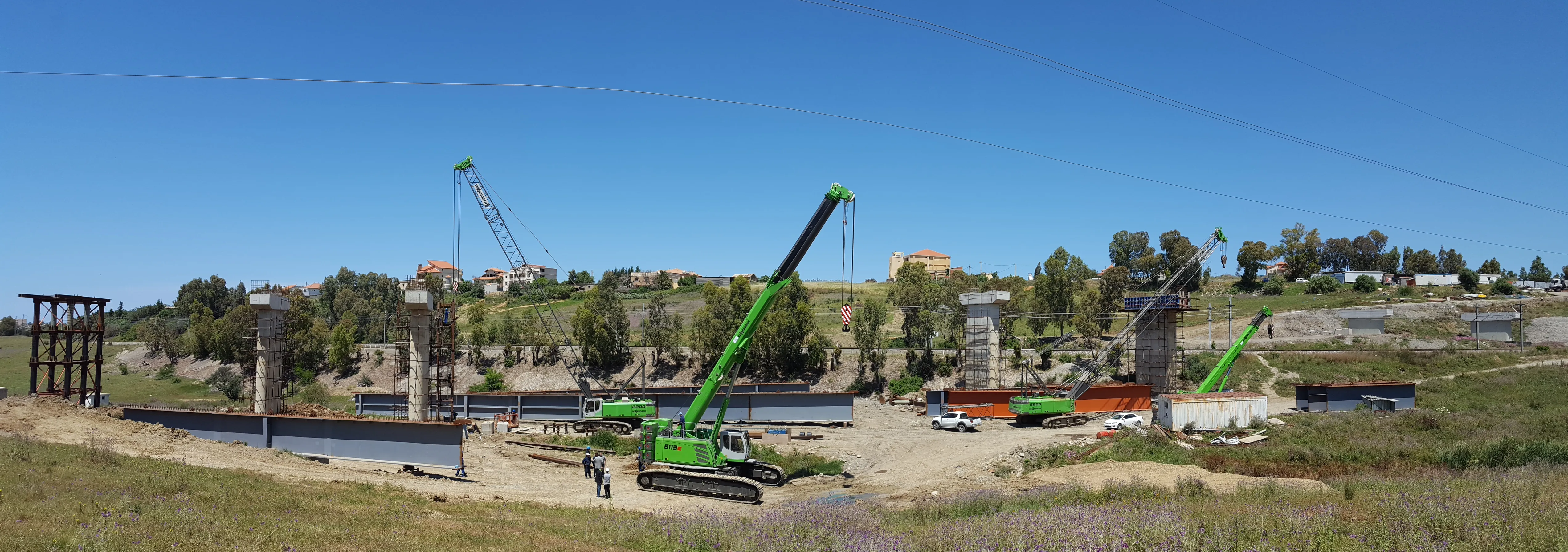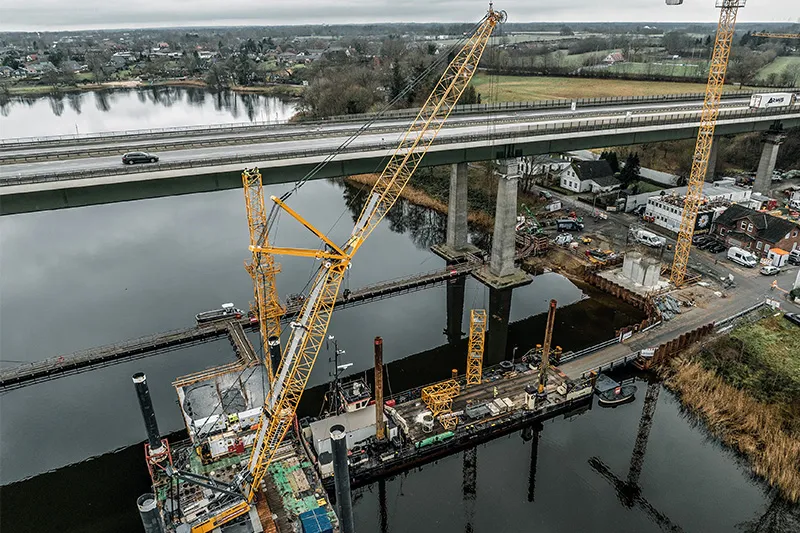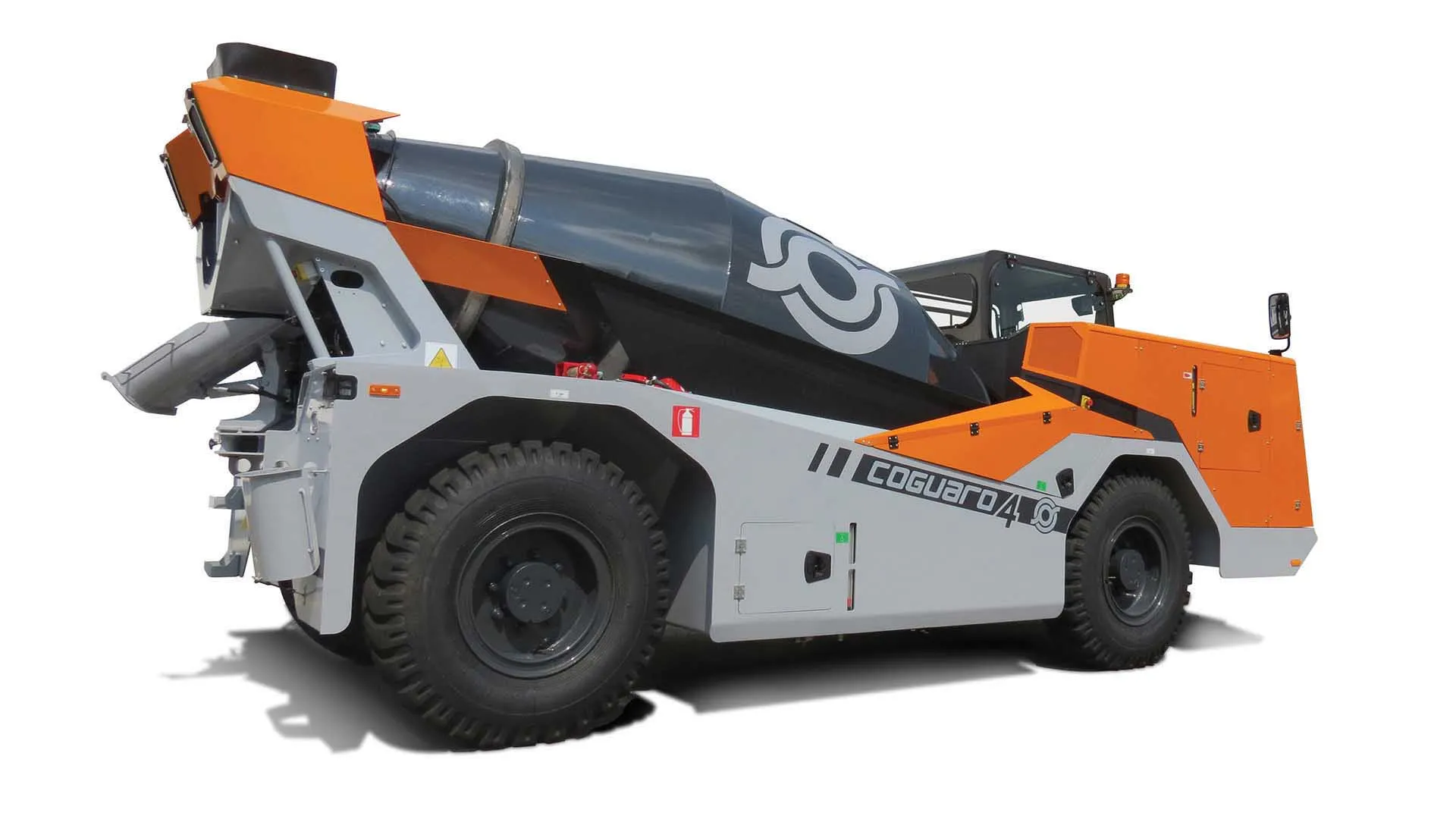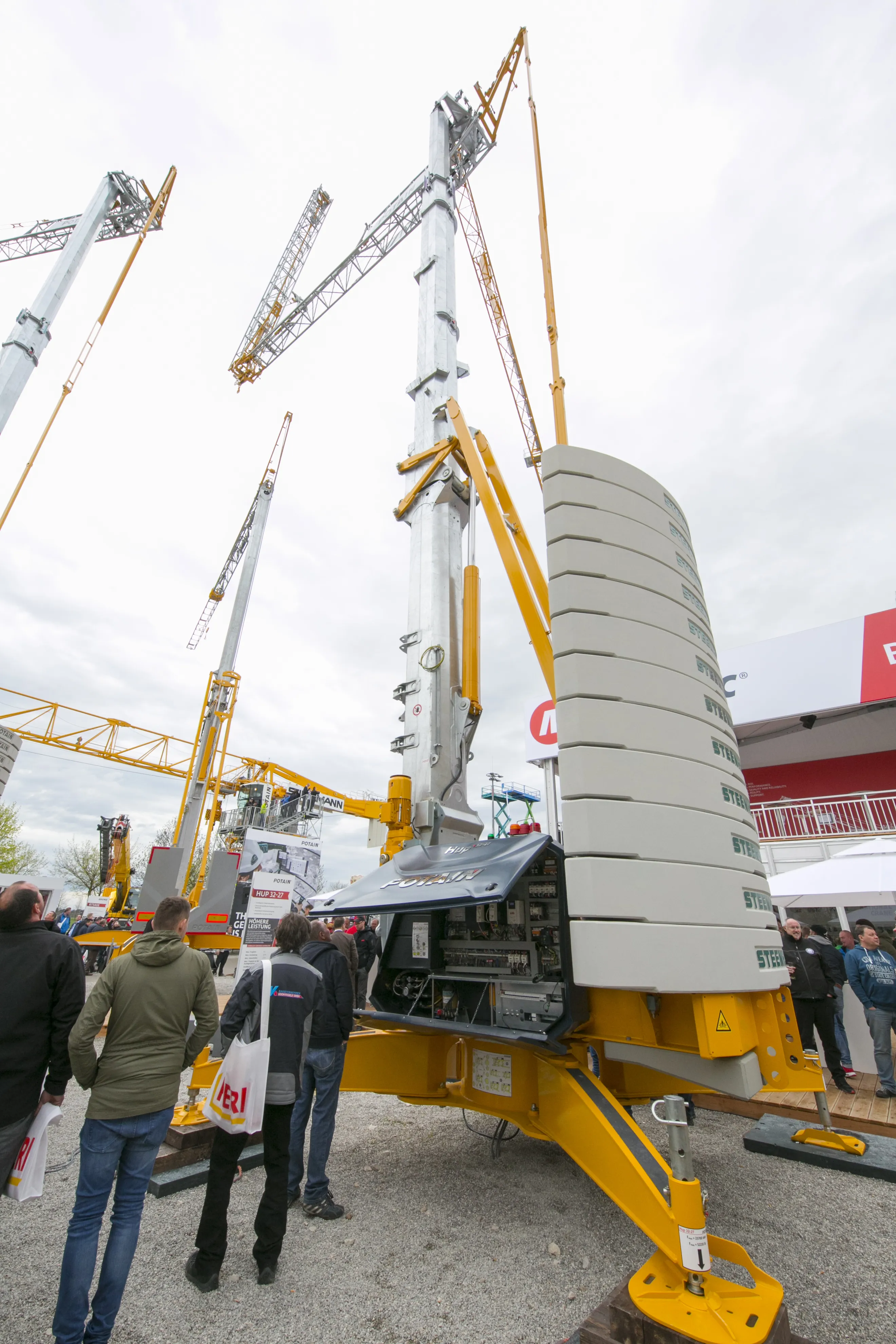Algerian firm SAPTA is currently using four Sennebogen cranes for a bridge project close to Algerian capital Algiers. SAPTA is a specialist in bridge construction and is using the cranes, a combination of crawler and telescopic machines, to lift heavy components weighing up to 60tonnes
January 5, 2017
Read time: 2 mins

Algerian firm SAPTA is currently using four Sennebogen cranes for a bridge project close to Algerian capital Algiers. SAPTA is a specialist in bridge construction and is using the cranes, a combination of crawler and telescopic machines, to lift heavy components weighing up to 60tonnes
The latest of these cranes is a2924 Sennebogen 6113 telescopic crawler crane with a capacity for 120tonnes.
SAPTA is a long-standing customer of Sennebogen, having previously purchased two 80tonne capacity 2200 crawler cranes. During the last two years, the firm bought a 683 telescopic crane, followed by a 120tonne 6113 telescopic crawler crane from Sennebogen’s sales and service partner EURL SM Maintenance. All four machines have now been used simultaneously during a major bridge building project in the country.
During the construction phase, large-sized structural parts measuring up to 40m long and weighing up to 60tonnes had to be lifted into place. Being able to travel and move easily under load, this is where the telescopic cranes proved their worth, according to Sennebogen. With a maximum load capacity of 120tonnes and a maximum reach of up to 40.2m, the Full-Power Boom of the new Sennebogen 6113 has come in particular use for this task. The machine’s joystick control is also said to make telescoping under load quicker and easier. The machines also benefit from a proven multi-cylinder system, which ensures that any boom position can be approached smoothly and without interruption. While crawler cranes can be operated only in one specified boom configuration, telescopic crawler cranes offer a higher degree of versatility. The boom can be set up in any position within minutes, while the chassis can be extended and retracted to achieve narrow track widths during driving or a large outrigger area in lifting operation. Transport can also benefit from the space-saving design of the retractable undercarriage, as well as the self-assembly system.
With Algeria continuing to expand its highway network, the country has a need for new bridges. SAPTA will have a steady supply of contracts for some time to come and the Sennebogen crane fleet is likely to remain busy.
The latest of these cranes is a
SAPTA is a long-standing customer of Sennebogen, having previously purchased two 80tonne capacity 2200 crawler cranes. During the last two years, the firm bought a 683 telescopic crane, followed by a 120tonne 6113 telescopic crawler crane from Sennebogen’s sales and service partner EURL SM Maintenance. All four machines have now been used simultaneously during a major bridge building project in the country.
During the construction phase, large-sized structural parts measuring up to 40m long and weighing up to 60tonnes had to be lifted into place. Being able to travel and move easily under load, this is where the telescopic cranes proved their worth, according to Sennebogen. With a maximum load capacity of 120tonnes and a maximum reach of up to 40.2m, the Full-Power Boom of the new Sennebogen 6113 has come in particular use for this task. The machine’s joystick control is also said to make telescoping under load quicker and easier. The machines also benefit from a proven multi-cylinder system, which ensures that any boom position can be approached smoothly and without interruption. While crawler cranes can be operated only in one specified boom configuration, telescopic crawler cranes offer a higher degree of versatility. The boom can be set up in any position within minutes, while the chassis can be extended and retracted to achieve narrow track widths during driving or a large outrigger area in lifting operation. Transport can also benefit from the space-saving design of the retractable undercarriage, as well as the self-assembly system.
With Algeria continuing to expand its highway network, the country has a need for new bridges. SAPTA will have a steady supply of contracts for some time to come and the Sennebogen crane fleet is likely to remain busy.









